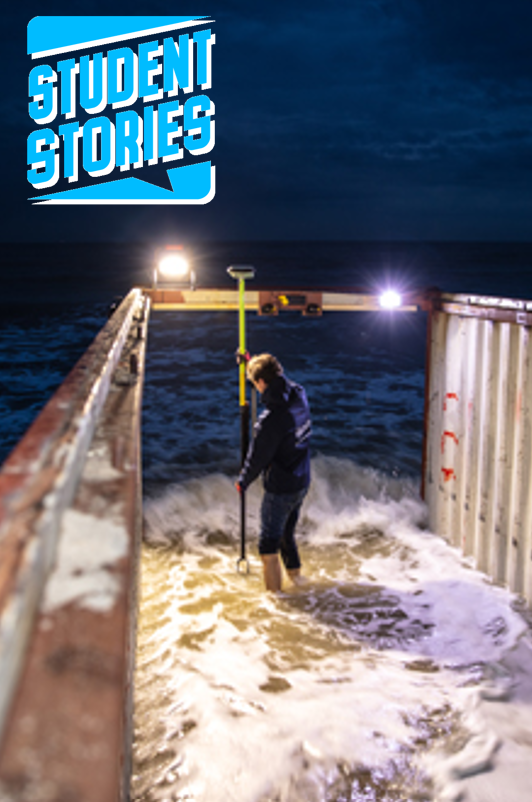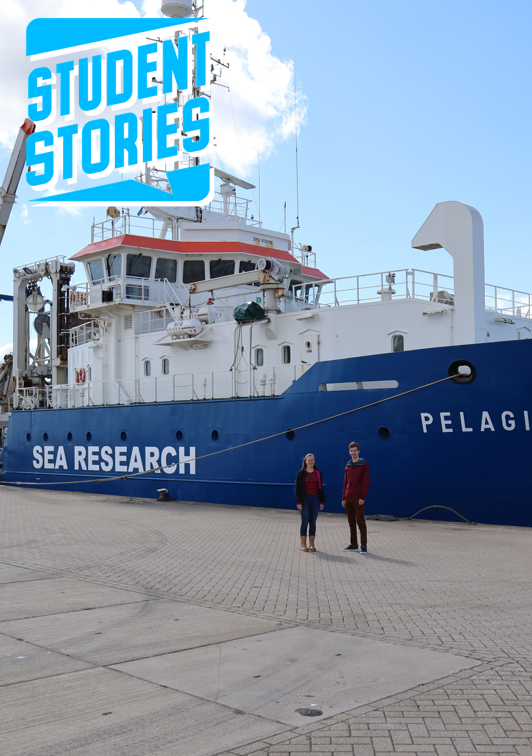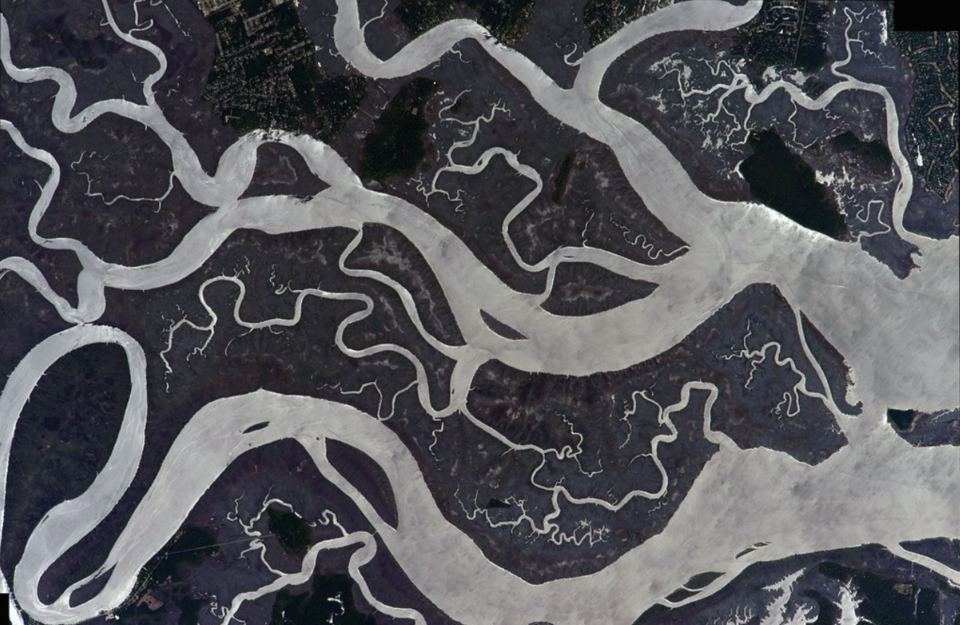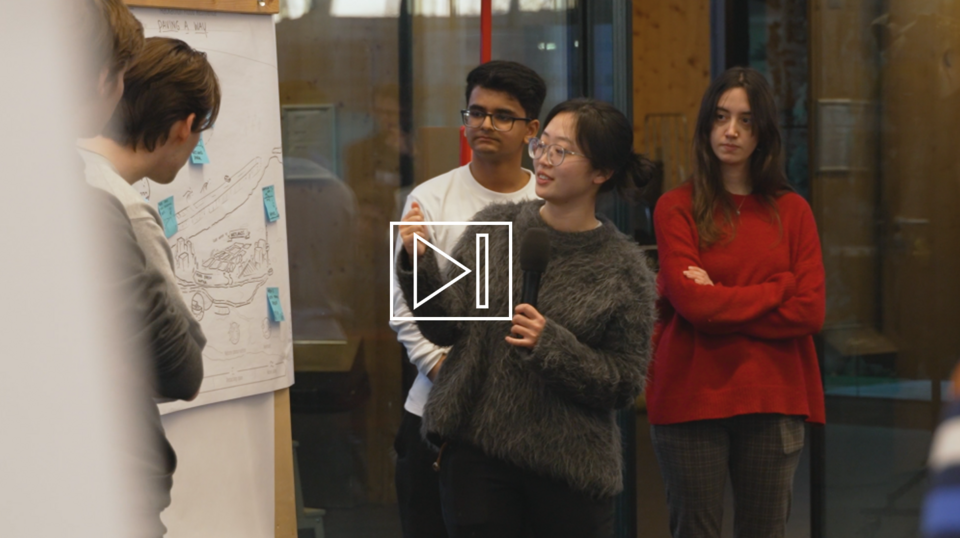Track Hydraulic Engineering
Imagine a world where deltas flood unchecked, beaches vanish, and vital ports like Shanghai and Rotterdam can't expand through land reclamation. Can we fathom a future without hydraulic engineering?
In the track Hydraulic Engineering, you'll develop engineering solutions for complex problems in water systems like rivers, estuaries, coasts, and oceans. From modelling to design and analysis, you'll address flood protection, navigation, ecology, and water quality amidst climate change and urbanization. You’ll gain expertise in wave physics, flow dynamics, sediment transport, and flood risk analysis to develop engineering solutions which balance environmental sustainability with societal needs in a changing world.
Key features
➨ Model hydrodynamic processes in rivers, estuaries and seas and develop engineering solutions for facing natural and human-induced challenges.
➨ Assess responses of rivers, coasts, and estuaries to natural and human-induced changes.
➨ Develop state of the art knowledge in wave dynamics, sediment transport, freshwater and water quality, nature-based solutions in deltas (rivers, coasts), advanced technologies in ports and waterways.
➨ Use and develop cutting-edge technologies for lab experiments, field measurements, and remote sensing in water systems.
➨ Work closely with industry, research institutes and governmental agencies.
Track Curriculum
Track Base Module: Hydraulic Engineering Fundamentals and Environments Part 1
In Hydraulic Engineering Fundamentals and Environments Part 1 (CIEM 3000), you'll delve into complexities of water systems, mastering modelling, design, and analysis for flood protection, navigation, and ecological sustainability. You'll study wave dynamics, sediment transport, and flood risk to engineer interventions that balance environmental needs with societal demands amid urbanization and climate change. The module takes place over Q2 and Q3.
A-Module
In the A-Module, Hydraulic Engineering Fundamentals and Environments Part II (CIEM 3110), you'll model, design, and analyse water systems such as rivers, coasts, estuaries, waterways, and ports to ensure flood protection, navigation, and sustainable coastal management amidst challenges like urbanization and climate change. You'll gain expertise in wave dynamics, sediment transport, and coastal protection strategies, enabling you to develop advanced engineering solutions that address environmental challenges effectively.
B-Module
In Q4, you choose your B-module, allowing you to further specialise with the field. Each module includes a workshop on ethical responsibility of engineers, field visits, and lab experiments. There are three modules to choose from.
-
This module covers coastal engineering problems and interventions, focusing on impact assessment, advanced system knowledge, and tool application. You'll study Coastal and Estuarine Systems, Coastal and Estuarine Modelling, and Shore Protection & Breakwaters. The module includes hands-on assignments, ethical considerations, and guest lectures, culminating in exams and projects.
-
This module is broken up into three units: Physics of River Systems (4 EC), River Functions and Management (6 EC), and Schematization and Modelling of River Problems (5 EC). You'll learn river system physics, management, and problem-solving using modelling and assessment tools.
-
In this module you’ll learn advanced design methods for ports and waterways, focusing on logistical, nautical, and natural processes. Using data science and simulation techniques, you'll analyse system performance and design interventions. Guest lectures, field visits, and real-life case studies will enhance your learning experience.
Graduation Projects
You’ll have a multitude of opportunities for your master’s thesis. Below are just a few highlighted projects of previous students. Prep for the master thesis starts in Q6 after completing the electives and cross-over courses of the general programme.
Student Experiences
Our students are actively shaping their futures through research and dynamic projects. Check out their firsthand accounts, compelling stories, and inspiring films showcasing their experiences as a student.

What do graduates of Civil Engineering end up doing in the world? Watch the video’s and read their stories to find out.
Ilze Plomp-van der Sar
Ilze Plomp-van der Sar graduated in 2016 and currently works for the Rijkswaterstaat as a senior Asset Management Advisor at the Maeslant Barrier. The Maeslant Barrier is a huge storm surge barrier built to protect residents of South Holland from high sea water levels. Ilze works to maintain the Maeslant Barrier so that it functions properly when it is needed.
In her job, she frequently employs a holistic approach on maintenance, allowing her to zoom out and reflect on how a specific task aligns with the Rijkswaterstaat's mission. For her, it is crucial to view a project, such as the Maeslant Barrier, within the whole context: a certain component works together with another. You cannot really consider them separately. Another important aspect is establishing the relationship with reliability and availability and assessing the risks. That is how she makes informed decisions, decisions which have an impact on the defence barriers protecting millions of people.
This role is a big responsibility. When the Maeslant Barrier closes, we really have to be ready. That's when we get to show our worth and what we’re here for. And that’s protecting millions of people. I may not be a doctor, but in that moment, I am saving lives, and it’s awesome.
Ilze Plomp-van der Sar, Senior Asset Management Advisor, Rijkswaterstaat





